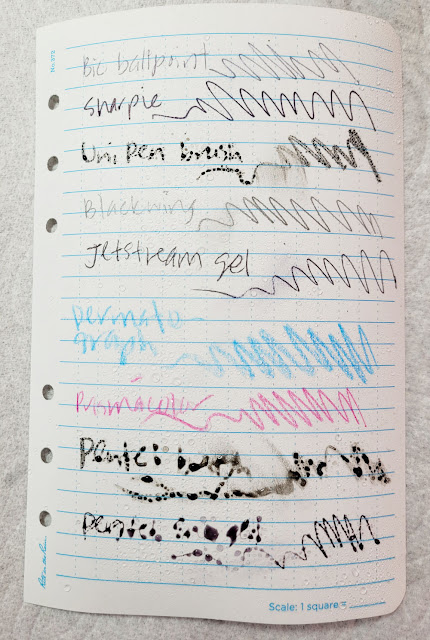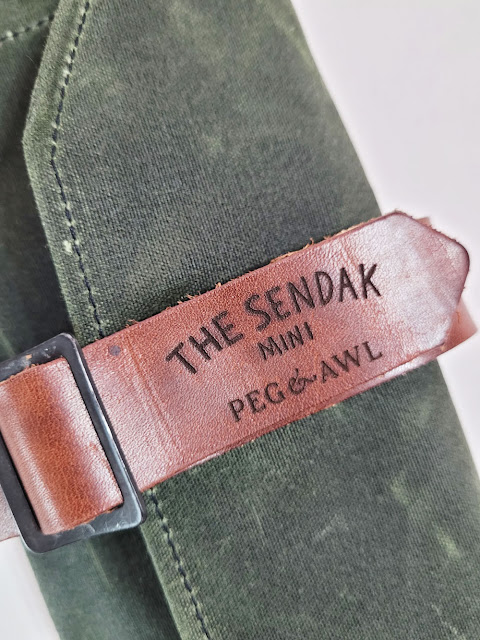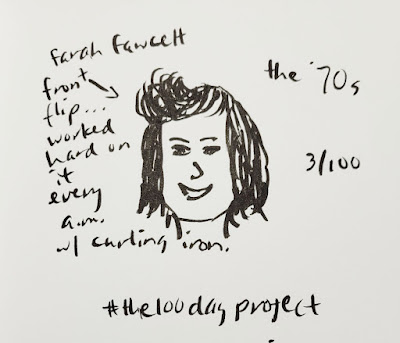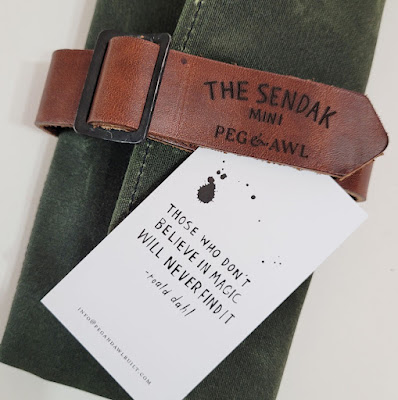 |
| Happily rolling along with the mini Sendak |
You may recall that I started using the Tombow Irojiten pencil roll a few months ago. Despite my many fantasies (as described in
that post), I didn’t think that a roll-type case would meet my general sketching
needs: When on location, I prefer to stand, and unrolling a case that I had
nowhere to lay out seemed unwieldy. In the winter, though, I do most of my
urban sketching from my car or in coffee shops, where I thought a roll could
work. I had hoped the Tombow roll experiment would allow me to indulge in my
Parisian café fantasies, at least temporarily. (Alas, I didn’t know then that
omicron would dissuade me from spending much time inside coffee shops for yet
another winter, but I digress.)
After about a month of use, I made several observations: As
I had feared, the Tombow roll’s natural-colored canvas got dirty fast, and not
in a way that I would describe as a charming patina. In addition, the Tombow’s
elastic loops are ideal for pencils, but thicker pens and markers are a
struggle to get into the loops, which is limiting.
At the same time, the efficient ease of folding up my
supplies appealed to me. I used it to sketch in coffee shops only a few times
(you can see it in action at the Nordic Museum’s Freya Café), but I used
it plenty of times in my car, where I just propped it up against the steering wheel – convenient and handy. The longer I used it, the more I thought, maybe I could be a roll-type gal after all (at least in winter)!
You can see where this is going: I wanted to use a roll, but
not the Tombow. A Christmas gift card and a big post-holiday sale at Peg
& Awl came together: The Sendak Mini Artist Roll that I had been
coveting for years finally became mine!
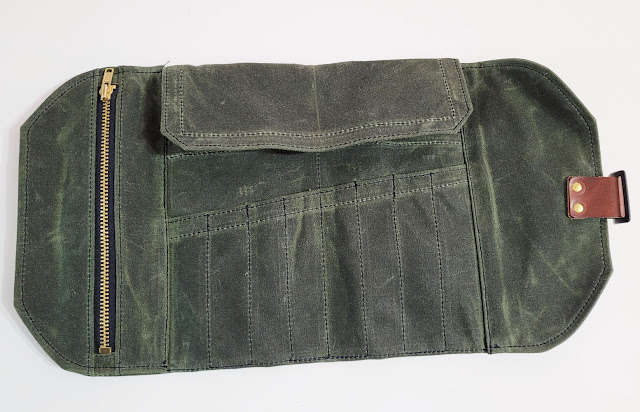 |
| Upper flap protects pencils and other tools |
Peg & Awl’s Sendak rolls (mini and full size) are made
of durable waxed canvas in several color options. I chose dark moss, which I
knew would hide dirt well (mine is already starting to gain a scuffed patina
that I would describe as charming).
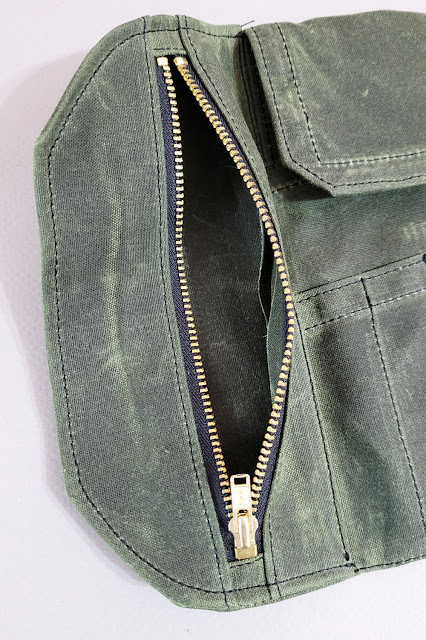 |
| One zippered compartment for small tools like sharpener and blending stump |
I use the single narrow zipped pocket to hold a sharpener
and a blending stump. I could put more in there, but I’m keeping in mind how
much I enjoyed the Tombow’s svelte folded profile. (I affectionately think of the
Tombow as a pencil sandwich instead of a roll; I don’t want the Sendak to turn
into a bulging burrito.) The other pockets and slots are for my limited
watercolor pencil palette, one brush pen and a waterbrush – the key essentials in my sketch kit.
(I still carry other non-color tools and supplies in my supplemental accessory organizer, though its contents change over time.)
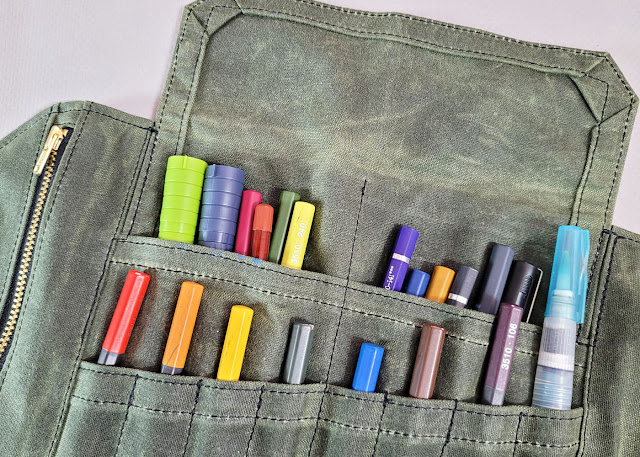 |
| Current materials: A couple of Durer watercolor markers, watercolor pencils, a Uni Pin brush pen, a waterbrush |
One benefit I noticed immediately is that it’s much easier
and faster to slip pencils into the Sendak’s slots and pockets compared to the
elastic bands in either the Tombow or my long-time-favorite sketch bag
accessory, the Tran Portfolio Pencil Case. (As much as the Tran
Portfolio has served my needs for years, getting pencils back into the loops
has always been frustrating – like randomly stabbing into the black hole of my
bag.)
Another upside is that thicker items like the Faber-Castell Albrecht Dürer watercolor markers that I have been trying lately fit easily
into the pockets – they would not fit into elastic loops designed for pencils.
Overall, the mini Sendak’s elegant design is more flexible and versatile for a
variety of tools and materials.
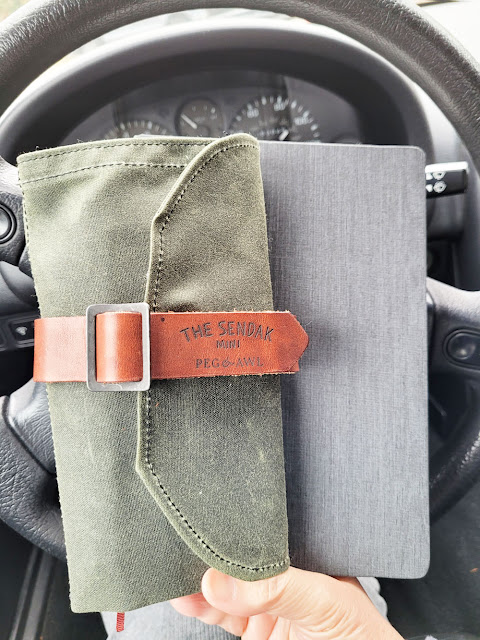 |
| When sketching from the car... |
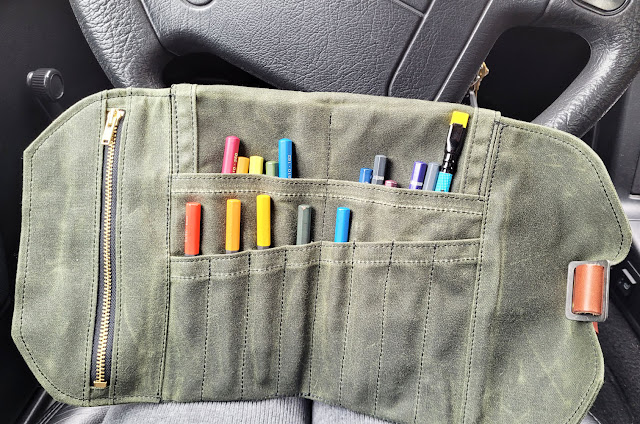 |
| ...I prop the mini Sendak against the steering wheel. |
Versatility – that brings me to my biggest and most exciting
discovery about the mini Sendak: Like my Miata, it’s a convertible!
While sketching from my car or at a table, I can unroll it, use it, and roll it back up again.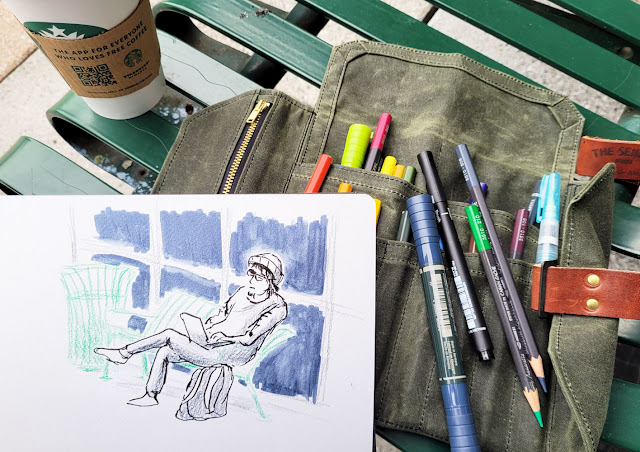 |
| This Starbucks had no cafe tables, but a courtyard bench worked just as well. |
That’s all fine and good, but what about when I’m standing on the sidewalk? What I loved most about the Tran
Portfolio is that it kept all my pencils upright and fully accessible just by
opening my bag. In the same way, when I’m sketching on location, I simply keep the
opened Sendak standing inside my bag. During outdoor-sketching season, I’ll
leave it that way. Imagine my glee when I realized that it works well both ways
– while I’m either sitting or standing! The mini Sendak is my year-round convertible.
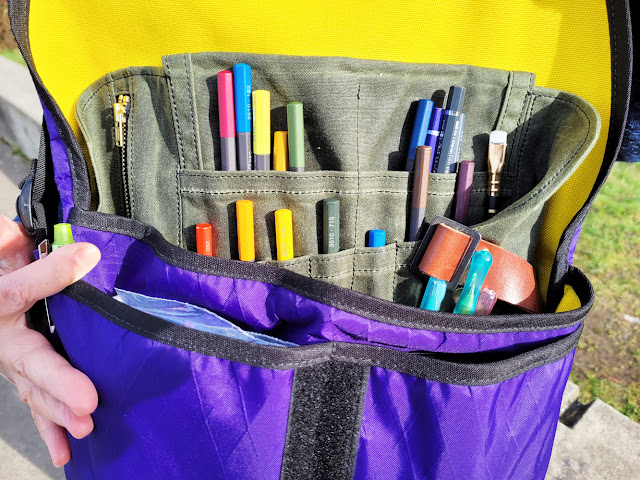 |
| Opened and standing upright, the mini Sendak fits nicely inside my usual "small" size Rickshaw Zero Messenger bag. I pulled it up for the photo, but it tucks in all the way to the bottom. |
I made two hacks to meet my needs better. The Sendak’s diagonally
slanted cut of the lower slots is intended to accommodate implements of various
lengths. But as some pencils get shorter and shorter, they begin to disappear
into even the shortest slots, and then they are difficult to retrieve. I devised
an easy solution: When a pencil gets too short, I drop a plastic, flat-bottomed
pencil cap (like the Sun-Star Sect) into the slot, which gives
the pencil a leg-up.
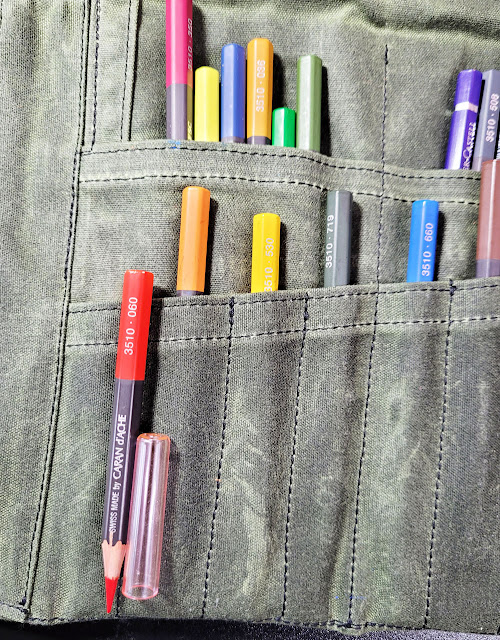 |
| The red pencil would sink all the way to the bottom of the slot and be difficult to pull out... |
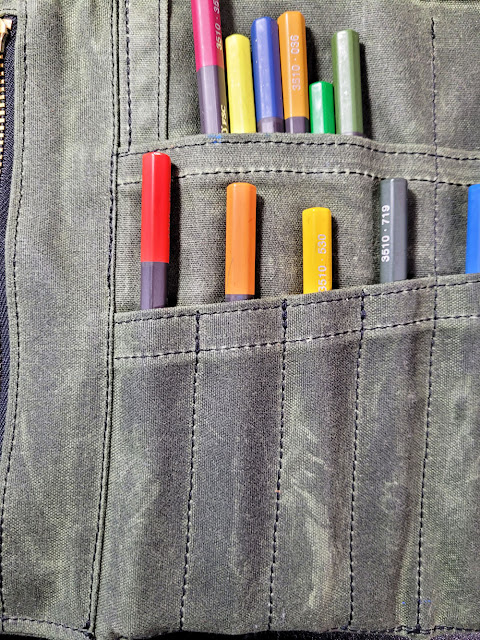 |
| ... but putting a pencil cap in the bottom of the slot gives the pencil a boost. |
Similarly, the upper pockets are the right depth for
longer pencils, but even medium-length pencils can disappear inside
them. I put a small piece of foam at the bottom of the pockets to make them a
bit shallower. When I use brand-new pencils, I can pull the foam out.
These hacks require my pencils to be arranged according to
height rather than by color. Since both the Tran Portfolio and the Tombow
enabled me to arrange my pencils by color (though the order was idiosyncratic
and not necessarily a conventional rainbow), at first I was afraid this would
be a problem. But during these pandemic years, I got used to the free-flowing
pencils in my small Rickshaw case, which doesn’t keep them in any order.
Even in my full sketch kit, I carry few enough colors (currently 16, and my
goal is always no more than 20) that it’s not difficult to find the ones I
want. The important part is that the pockets and slots keep all implements
upright, visible and easily accessible, just like the Tran Portfolio did. An
improvement over the Tran, though, is that the pencils are just as easy to
return to their slots as they are to pull out.
The only mini Sendak detail that I’m not crazy about is the
leather belt and buckle that secure it. Fastening the buckle is fussier than I
like – the Tombow’s easy elastic band was more my style – but I can live with
it. I hope the leather will soften over time and become easier to fasten.
I’m thrilled that the ever-versatile mini Sendak is meeting
my needs in ways I had not expected. I don’t often sketch my sketch materials
and tools, but this one deserved a “portrait.”
Updated 4/16/22: See how I use both the mini Sendak and her big sister to keep everything in my bag organized.
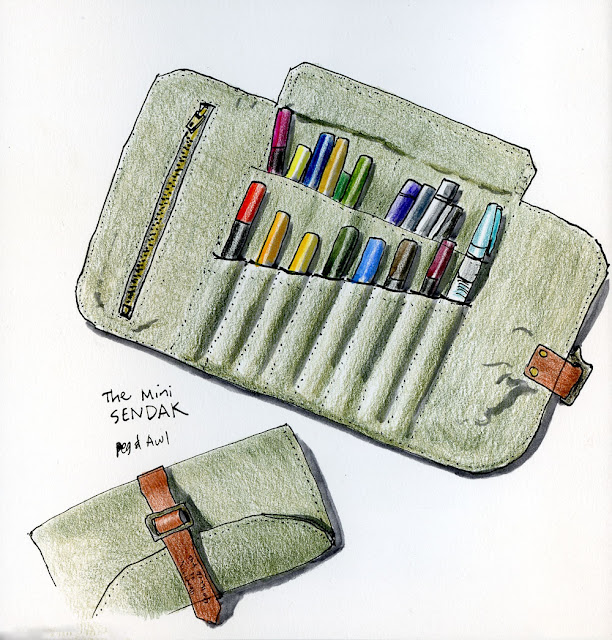 |
| 2/7/22 My convertible mini Sendak |






















